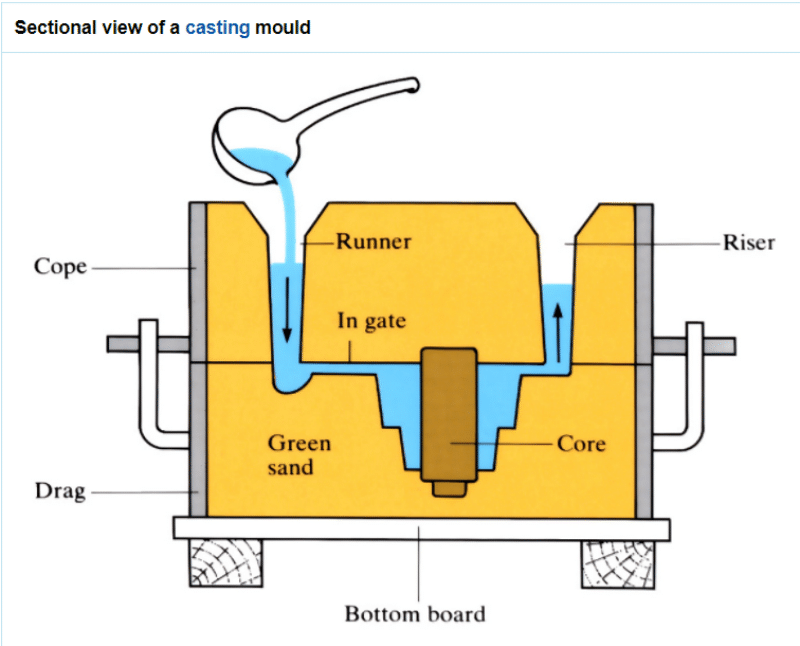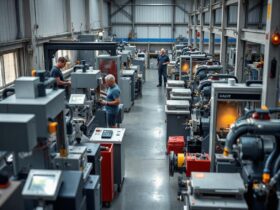Sand casting is considered to be one of the best manufacturing methods in the world. This is because the whole process allows engineers to design very complex parts.
What Does Sand Casting Involve?
The process of sand casting involves pouring molten metal into a sand mold cavity. This can be done by force or by gravity. Once the metal has been poured into the mold it will become a solid shape. Any 3-dimensional objects that are created in this process are known as castings.

Why is Sand Casting Used?
Sand casting is typically used because:
It has the ability to produce castings that are very small to castings that weigh more than 100 tons. In addition to this, it is relatively easy to produce complex parts using sand casting.
With a low dimensional accuracy, sand casting is a highly-adaptable process that can be used for mass-producing a wide range of products.
How Does The Process of Sand Casting Work?
When using sand casting to manufacture an object, 7 steps are typically used:
1. Pattern making – This involves making a replica of the object that is going to be cast. The replica is typically larger than it needs to be to allow for shrinkage as the metal cools.
2. Mold making – The mold is formed by packing sand into and around the pattern.
3. Clamping – The 2 halves of the mold are clamped together so they stay in the right position while the molten metal is being poured into it.
4. Pouring – At this stage, the molten metal reaches a specific temperature and is then quickly poured into the cast. This is done as quickly as possible so that it does not solidify too early.
5. Cooling – The molten metal starts to solidify and cool when it’s inside the mold. Many of the defects that are associated with sand casting are formed at this stage.
6. Shaking/breaking – As soon as the cooling period is over the mold is either broken away or shake so the casting comes out.
7. Trimming – This part of the process involves removing any section that was connected to the main part and trimming excess metal away.
The Pros and Cons of Sand Casting

The pros and cons of sand casting are:
Pros:
- It’s relatively easy to create large parts
- You can recycle any scrap metal
- You can use a wide selection of metal
- Shapes that are quite complex can be casted
- It’s a quick process compared to other casting processes
- The cost of the tools and equipment is quite low when compared to other similar processes
Cons:
- The product might not be as strong as you think
- The surface’s finish is often poor
- The product could be very porous
- It’s hard to remove small and thin parts
- There’s a high processing cost
Sand casting is a process that has been used in the manufacturing industry for many years. Reliable and relatively easy to use, it’s no wonder more and more people are choosing sand casted products.













Leave a Reply